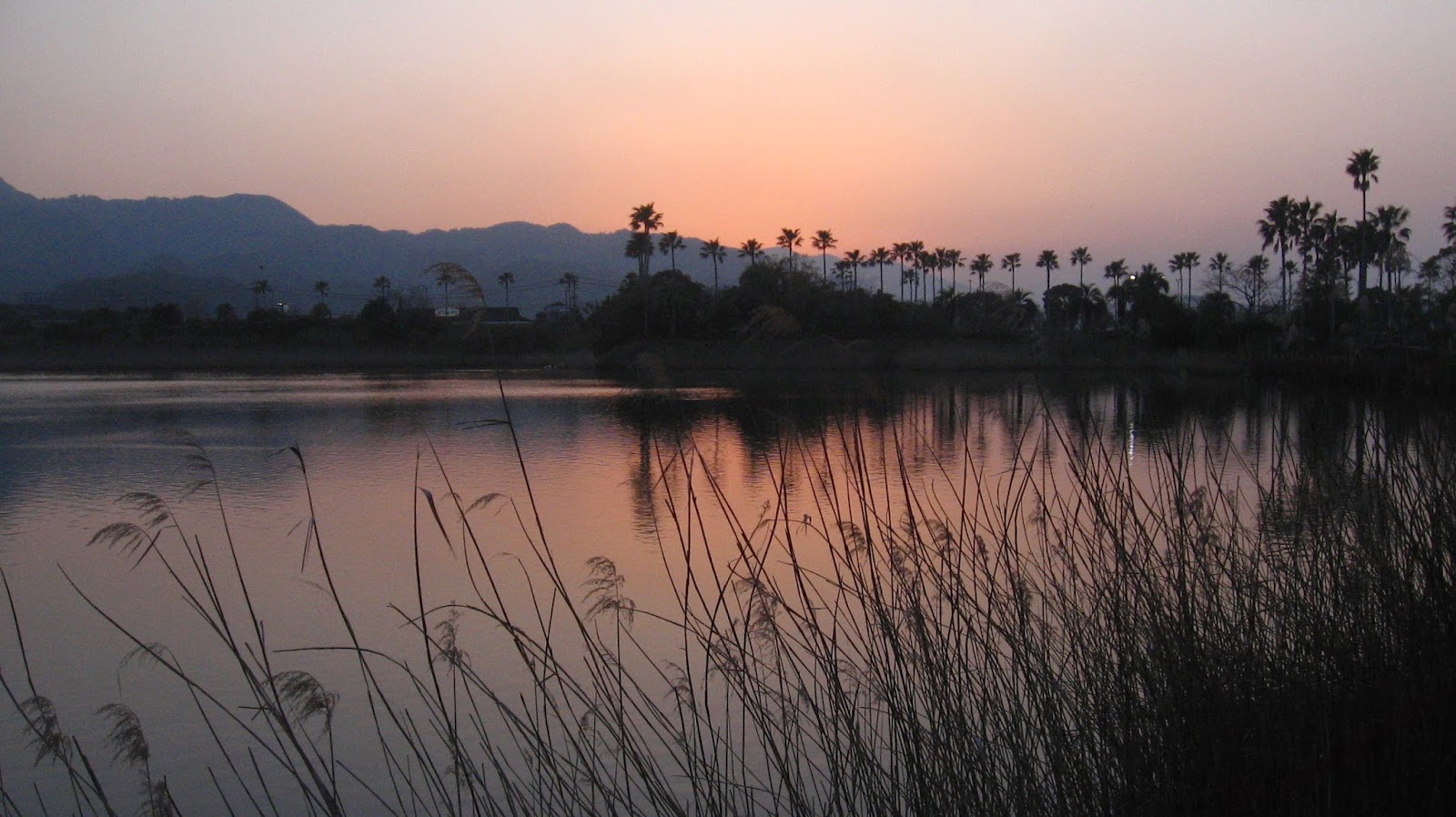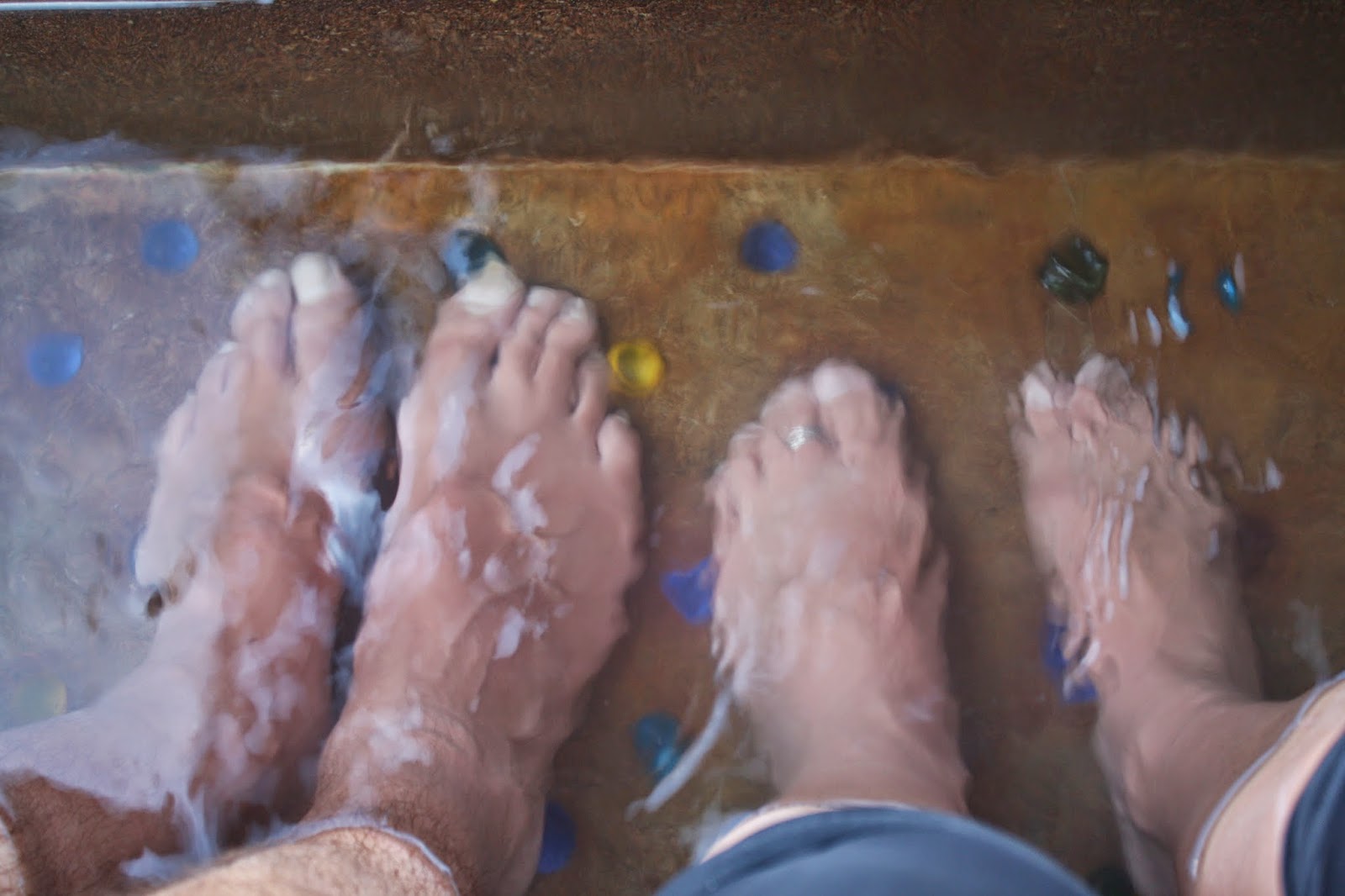 |
| morning view from our camp in the park |
Later we read it is one of three largest gate towers of its kind in the whole of Japan. The temple is thought to have been founded about 2000 years ago. Outside a shop I spot a photo booth. Great, now I can get my passport photos done. The options don't quite match what I require - the sizes are wrong. But inside the booth is an option that fits. I put in my money and ........ pull out a plum. Photos are the wrong size and "Look, Gayle, it's changed the size of my head to my shoulders. It makes me look like a pin-head." Gayle, fed up with waiting, takes a quick glance and shrugs "That's what you look like." Charming.
We ride through a collection of tiny fields. Over seventy are marked out in an area that in England might be just a single field. And then the road climbs steeply up to a look-out point on the northern edge of the caldera and we soak in another view of the volcano, still smoking today. It's a sunny Saturday and the road is busy with day-trippers. We follow the dips and folds in the road, weary after the last few days, and climbing steadily again towards some mountains. We check the map. Uh-oh. There's a pass ahead at 1300 metres. Ooof. When we reach a road station we decide to stop for the day. One of the main attractions about this place is the free samples of doughnut sticks in the shop. Treacle or honey flavour? Or both? There's free wi-fi and a nice sunny spot to sit in the car-park. The place is busy with bikers, all pausing to give their wrists a well-earned rest. Just below the service area is a campsite that looks closed, but Gayle discovers a shower in a laundry room that takes a coin. When the sun sets we pitch our tent on the grass behind the car park and take it in turns to have a steaming hot shower. It's luxury.
Sunday. We decide to take a rest day and stay here. A bit of early morning rain gives us an excuse for a lie-in. By mid-morning the sun is out and everything is dry. We take it in turns to use the computer and wander around. The woman in the convenience store recognises us and tells us about a nearby hostel, but we seem to have everything we need right here. In the afternoon she gives Gayle a bag of pastries. Another of the staff in the main building gives us each a chocolate. It seems that if you just sit on the pavement in Japan and look homeless people will bring you food. We supplement these kind offerings with ocassional drive-bys of the doughnut sticks. By mid-afternoon I'm feeling sick.
 |
| this lovely lady insisted on giving us a bag of goodies to take away with us |
 |
| 80% mountainous??? |
 |
| don't tell the passport office, but my photo has been touched up |
 |
| wild boar are turned into cartoons |











































